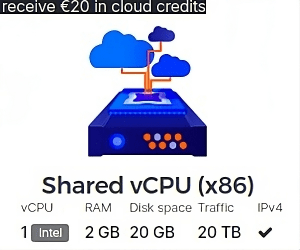What is Phishing, Types, Detection, and Protection
A Comprehensive Guide to Phishing: Types, Detection, and Protection
Introduction
Phishing is one of the most pervasive and dangerous threats in the realm of cybersecurity. The goal of phishing is to deceive individuals into divulging sensitive information such as usernames, passwords, credit card numbers, and other personal details. Phishing attacks can be incredibly sophisticated, utilizing various techniques and approaches to trick users. This article will provide a detailed explanation of the different types of phishing attacks, how to recognize them, and how to protect yourself from these threats.
What is Phishing?
Phishing is a form of fraud where attackers use fake messages, emails, websites, or other forms of communication to deceive users and trick them into revealing their sensitive information. These messages typically appear to come from trusted sources like banks, popular websites, or even acquaintances of the victim.

Types of Phishing Attacks
1. Email Phishing
Email phishing involves sending a large number of fraudulent emails that appear to come from reputable organizations. These emails often contain urgent requests for action, such as “Your account has been compromised” or “Immediate verification of your details is required.” The goal is to entice the recipient to click on a malicious link or download an infected attachment.
Example: An email that appears to be from your bank, stating that your account has been locked and you need to click on a link to verify your identity.
2. Spear Phishing
Spear phishing is a targeted form of phishing aimed at a specific individual or organization. Unlike email phishing, spear phishing uses personalized information to make the attack more convincing. For instance, attackers might use the victim’s name, job title, or specific details about projects they are working on.
Example: An email addressed to an employee, mentioning a specific project they are working on and asking them to log in to a fake portal to view important documents.
3. Whaling
Whaling is a specific type of spear phishing that targets high-ranking officials or executives within an organization. These attacks are usually sophisticated and personalized, using information relevant to the targeted individual. The goal is often to steal sensitive business data or financial information.
Example: An email that appears to be from a CEO to the finance department, requesting an urgent wire transfer for a business deal.
4. Vishing
Vishing, or voice phishing, uses phone calls instead of emails to deceive victims. Attackers may pose as bank employees, tech support, or other trusted figures to extract sensitive information through a phone conversation.
Example: A call from someone claiming to be from your bank, informing you of suspicious activity on your account and asking for your account details to verify your identity.
5. Smishing
Smishing, or SMS phishing, uses text messages to trick users. Attackers send fake SMS messages that often contain links to malicious websites or requests for personal information. These messages can appear to come from banks, delivery services, or other trusted sources.
Example: A text message from a delivery service stating that you have a package waiting and need to click on a link to confirm your details.
6. Clone Phishing
Clone phishing involves creating almost identical copies of legitimate emails previously sent to the user. Attackers modify certain parts of the email, such as links or attachments, to include malicious content. The victim often does not realize the email is fake because it looks almost identical to the original.
Example: A follow-up email that appears to be from a colleague, with a link to a shared document. However, the link leads to a malicious website.
7. CEO Fraud
CEO fraud, also known as Business Email Compromise (BEC), involves attackers impersonating executives or other high-ranking employees within an organization. The goal is to trick employees into making financial transactions or divulging sensitive information. These attacks often use social engineering to appear convincing.
Example: An email that appears to be from the company’s CEO, requesting the finance department to transfer funds to a specific account urgently.
How to Recognize Phishing Attacks
1. Check the Sender’s Email Address
One of the first steps in recognizing a phishing email is to check the sender’s email address. Fake emails often come from addresses that are similar to, but not exactly the same as, legitimate addresses. For instance, instead of “[email protected]”, a phishing email might come from “[email protected]”.
2. Look for Grammar and Spelling Errors
Phishing emails often contain grammar and spelling mistakes. Legitimate organizations usually proofread their communications to ensure they are error-free. The presence of such errors can be a red flag.
3. Inspect Links Before Clicking
Before clicking on any link in an email, hover over the link to see the actual URL. If the URL looks suspicious or does not match the expected destination, do not click on it.
4. Be Wary of Requests for Sensitive Information
Legitimate organizations will never ask you to provide sensitive information such as passwords or credit card numbers via email or text message. If you receive such a request, contact the organization directly through official channels to verify the authenticity of the request.
5. Beware of Urgent Requests
Phishing emails often create a sense of urgency to prompt immediate action without thinking. Messages that claim your account is at risk or that you need to act immediately are often phishing attempts.
How to Protect Yourself from Phishing Attacks
1. Use Antivirus Software
Installing and regularly updating antivirus software can help protect your computer from malicious attachments and websites. Antivirus software can detect and block phishing attempts before they cause harm.
2. Keep Software and Operating Systems Updated
Regularly updating your software and operating system helps protect your device from the latest threats. Security patches often include fixes for vulnerabilities that attackers can exploit.
3. Enable Multi-Factor Authentication
Multi-factor authentication (MFA) adds an extra layer of security to your accounts by requiring multiple forms of verification before granting access. Even if an attacker obtains your password, MFA can prevent unauthorized access.
4. Educate and Raise Awareness
Education is crucial for recognizing and preventing phishing attacks. Regularly educate yourself and your employees about the latest threats and techniques used by attackers. Stay informed about the latest trends in phishing and learn how to recognize them.
5. Use Email Security Tools
Many email providers offer security tools that can help detect and block phishing emails. Spam filters and anti-phishing tools can reduce the risk of receiving malicious messages.
6. Regularly Monitor Financial Accounts
Regularly check your financial accounts to quickly identify any suspicious activity. If you notice any unauthorized transactions, immediately report them to your bank or financial institution.
7. Use Unique and Strong Passwords
Using unique and strong passwords for different accounts can help protect your information. Avoid using the same password for multiple accounts and use password management tools to keep track of your passwords.
Examples of Phishing Scenarios
1. Phishing Email from a Bank
You receive an email that appears to be from your bank, informing you that your account has been compromised. The email includes a link to a website where you are asked to enter your login details to verify your identity. The website looks legitimate, but it is a fake site designed to steal your information.
How to Spot It: Check the sender’s email address for authenticity. Hover over the link to see the actual URL. Contact your bank directly through official channels to verify the email’s authenticity.
2. Spear Phishing Attack on an Employee
An employee at a company receives an email from what appears to be their manager, asking them to review a document related to an ongoing project. The email includes a link to a document sharing site. When the employee clicks the link, they are prompted to log in, but the login page is a fake site designed to capture their credentials.
How to Spot It: Verify the sender’s email address. Hover over the link to inspect the URL. Contact the sender through a known and trusted method to confirm the request.
3. Vishing Call from Tech Support
You receive a call from someone claiming to be from tech support, informing you that your computer has been infected with a virus. The caller asks you to download a remote access tool so they can fix the issue. Once installed, the attacker gains access to your computer and steals your sensitive information.
How to Spot It: Be skeptical of unsolicited tech support calls. Verify the caller’s identity by contacting the company directly using official contact information. Do not download or install software based on unsolicited calls.
4. Smishing Message from a Delivery Service
You receive a text message from what appears to be a delivery service, stating that you have a package waiting and need to click on a link to confirm your details. The link leads to a fake website designed to steal your personal information.
How to Spot It: Check the sender’s phone number. Hover over the link to inspect the URL. Contact the delivery service directly using official contact information to verify the message.
5. Clone Phishing Email from a Colleague
You receive an email from a colleague, referencing a previous conversation and including a link to a shared document. The email looks almost identical to the original email thread, but the link leads to a malicious website designed to steal your login credentials.
How to Spot It: Verify the sender’s email address. Hover over the link to inspect the URL. Confirm the request with the colleague through a known and trusted method.
Conclusion
Phishing is a serious threat to individuals and organizations worldwide. As technology evolves, attackers become more sophisticated in their attempts to deceive users. However, with proper education and the implementation of security measures, it is possible to significantly reduce the risk of phishing attacks. The key is to recognize warning signs, use security tools, and regularly update your devices and software. Stay vigilant and always double-check before sharing your sensitive information or clicking on suspicious links.











0 thoughts on “What is Phishing, Types, Detection, and Protection”